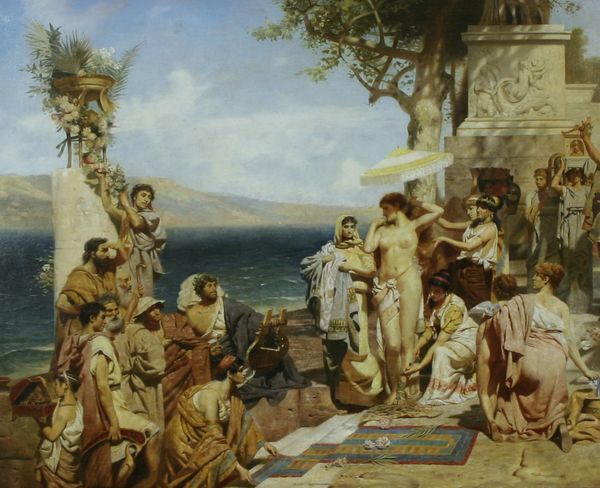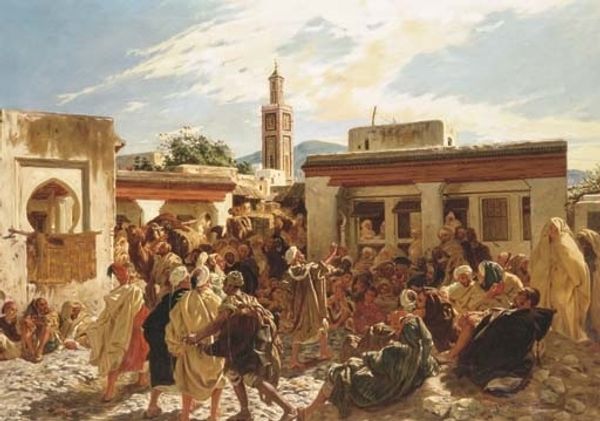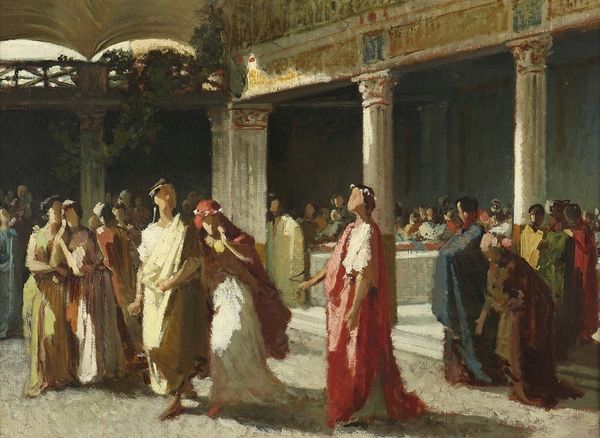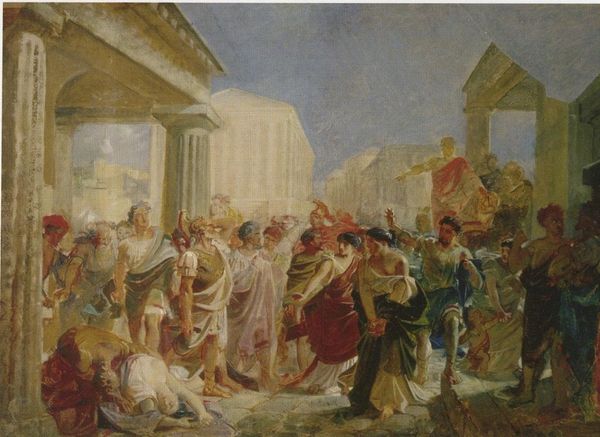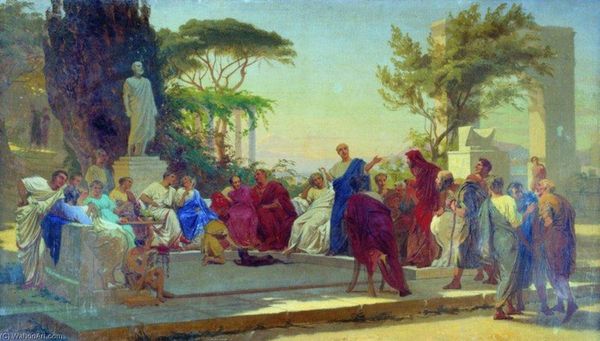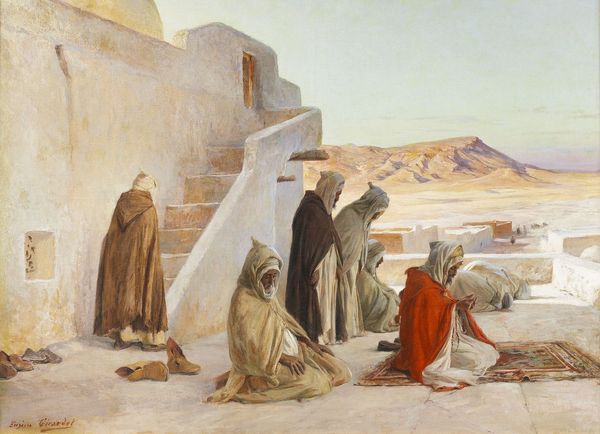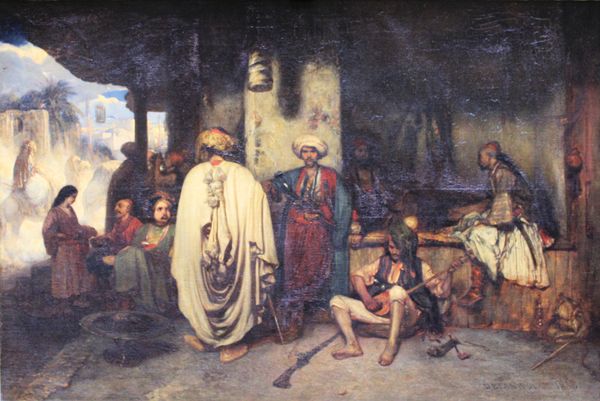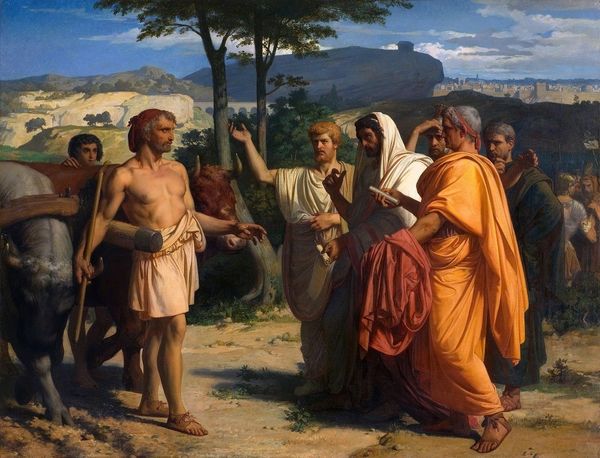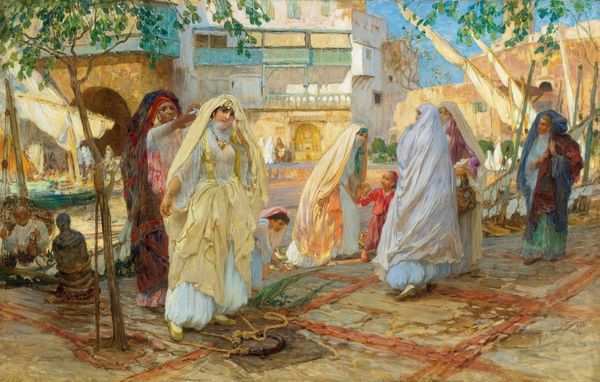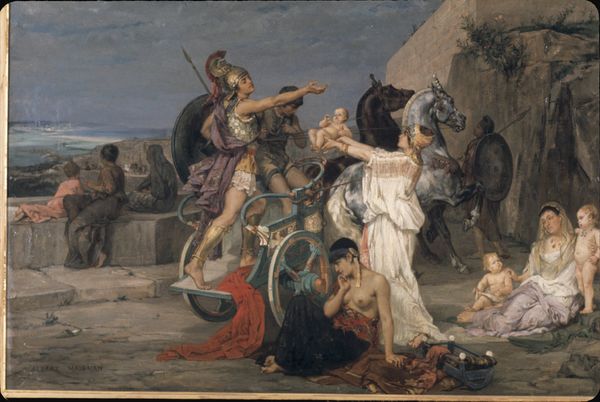
#
possibly oil pastel
#
handmade artwork painting
#
oil painting
#
fluid art
#
acrylic on canvas
#
coffee painting
#
painting painterly
#
watercolour illustration
#
watercolor
#
warm toned green
Copyright: Public domain
Curator: This piece, attributed to John Absolon, depicts "Elijah Before King Ahab." There's no definitive date currently available. Editor: My initial reaction is a sense of stark contrast. The figure of Elijah, bathed in light and commanding the space with raised hands, confronts the opulent, shadowed court of King Ahab. It feels incredibly charged. Curator: It's fascinating to consider this encounter through the lens of power dynamics. Elijah, representing a marginalized prophetic voice, dares to challenge the authority of a king. Absolon likely intended this as a visual commentary on moral authority versus political power. We see the king seated surrounded by counselors and others who stand in contrast to Elijah. Editor: Absolutely. And that challenge is heightened by Elijah’s physicality – barefoot, simply robed. His race and social status are a powerful statement about how dissent and resistance can arise from unexpected places. Consider what it may have meant in Absolon's time to center a marginalized figure speaking truth to power? It evokes questions about social justice movements in that era. Curator: Further the visual presentation contributes. The open setting contrasts with the confines of the tent which draws our eye. It raises important questions about how spaces shape interactions. The image is rife with social and political connotations. Kings throughout history were patrons of the arts. It speaks volumes that a narrative of confrontation rather than praise would be visually expressed. Editor: Looking at the audience surrounding Ahab, there’s a mix of emotions—curiosity, suspicion, perhaps even fear. Absolon’s captured the palpable tension inherent in such a confrontation, forcing us to consider how power affects not just those who wield it but also those subjected to it. I am particularly struck at how their subtle changes of emotional expressions reflect different reactions to the message and its implications. It provides a historical precedent and acts as commentary about speaking out against powerful political structures. Curator: And that's where this artwork becomes so resonant. It's not simply a historical depiction. It speaks to enduring themes of resistance, authority, and the power of marginalized voices to challenge the status quo. This visual rendition serves as a continuing conversation. Editor: Exactly, understanding those socio-political dimensions makes us approach this not as an antiquated image, but as a timeless inquiry into the mechanisms of power and resistance.
Comments
No comments
Be the first to comment and join the conversation on the ultimate creative platform.
